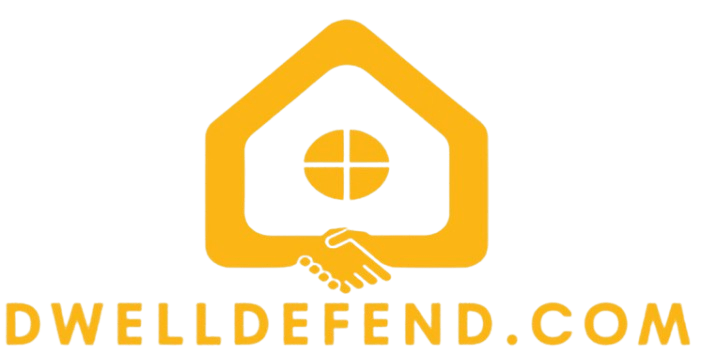How to Understand Your Home Insurance Policy?
Home insurance is more than just a safety net; it’s crucial for protecting your most valuable asset your home.
Understanding what coverage you need and the different types available is essential for your peace of mind.
Get ready to discover how to evaluate your needs and compare policies to ensure you have the right protection.
We will also explore best practices for reviewing your policy to maintain optimal protection.
Contents
- Key Takeaways:
- Understanding the Coverage of Your Policy
- How to Choose the Right Policy for Your Home
- Reviewing and Updating Your Policy
- Frequently Asked Questions
- What is home insurance?
- What are the different types of coverage in home insurance?
- What are the common exclusions in a home insurance policy?
- How do deductibles and limits work in a home insurance policy?
- What should I do if I don’t understand something in my home insurance policy?
- How often should I review and update my home insurance policy?
Key Takeaways:
- Understand your home insurance coverage by knowing the types of coverage and any exclusions.
- Choose the right policy by evaluating your needs and comparing options.
- Regularly review and update your policy to ensure it protects your home effectively.
What is Home Insurance?
Home insurance, or homeowners insurance, protects you financially from various risks.
This includes coverage for personal belongings, property damage, and liability protection.
It acts as a safeguard for your significant investment your home.
By understanding the importance of home insurance policies, you can choose the best coverage for unforeseen events.
Homeowners insurance helps cover costs from disasters like fire, theft, or severe weather.
It protects your personal belongings, like furniture and electronics, from loss or damage.
You can tailor your coverage from basic to comprehensive policies, allowing for additional living expenses if your home becomes uninhabitable.
Familiarizing yourself with these options helps you make informed choices that fit your lifestyle and finances.
Why is it Important?
Homeowners insurance is vital for protecting your financial future.
It offers liability protection against lawsuits and covers property damage from unexpected events.
This coverage helps you manage additional living expenses if you re displaced due to a covered loss.
Think of it as your safety net, protecting your physical assets and providing peace of mind in tough times.
Without adequate coverage, the burden of repairs and legal costs can be overwhelming.
You may also qualify for discounts, such as bundling policies or having security features at home, increasing the value of your investment.
Knowing these benefits is essential for anyone wanting to secure their home and future.
Understanding the Coverage of Your Policy
Understanding your homeowners insurance coverage is crucial for protecting your home and belongings, and knowing the basics of home insurance policies can help you achieve that.
Typically, policies include a declarations page that outlines coverage limits for dwelling, personal property, and liability.
By understanding your policy details, including home insurance policy limits, you can navigate potential claims with confidence and clarity.
Types of Coverage
Homeowners insurance presents a variety of coverage options designed to protect your residence and personal belongings from a multitude of risks.
A standard homeowners policy typically includes:
- Dwelling coverage
- Personal property protection
- Liability insurance
- Temporary housing costs if you need to leave your home during repairs
You might also want to consider specialized options like flood insurance or earthquake coverage. Exploring various compensation methodologies, such as actual cash value or replacement cost, can help to tailor your coverage according to your unique needs.
Understanding each type of coverage is essential for making informed choices. Dwelling coverage defends the physical structure of your home against losses from fire, storms, and other hazards.
Meanwhile, personal property coverage ensures that your belongings, from furniture to electronics, are replaced if they are lost or damaged.
Liability protection provides financial security in the event of injury claims that arise on your property.
Temporary housing costs come into play to cover your expenses if you cannot stay in your home during repairs.
Specialized coverages, like flood and earthquake insurance, address specific risks based on your geographical location. Different claims methodologies significantly impact how compensation is determined.
For example, actual cash value considers depreciation, while replacement cost offers a more straightforward path to restoring your valuables at current market prices.
Exclusions and Limitations
While homeowners insurance offers vital protection, it’s crucial to know what’s not covered by your policy.
Common exclusions often include specific natural disasters, intentional damage, and certain high-value personal possessions unless you’ve secured additional coverage.
Understanding these limits enables you to make informed decisions about your insurance needs. Flooding and earthquakes typically fall outside the coverage of standard policies, which may require separate flood or earthquake insurance.
Damage caused by pests or a lack of maintenance can often be excluded, leaving you exposed to potential losses.
This reality underscores the importance of thoroughly reviewing your policy documents to ensure you fully understand your coverage, including your rights in home insurance claims.
To further mitigate risks, consider endorsements that tailor your coverage to meet your specific needs. For instance, adding coverage for high-value art or jewelry ensures you’re adequately protected against potential losses.
How to Choose the Right Policy for Your Home
Choosing the right homeowners insurance policy requires a thoughtful evaluation of your unique needs and risks, including a clear understanding of the home insurance claims process.
Start by assessing the value of your belongings and identifying specific risks associated with your property.
Don t forget to explore the various homeowners insurance discounts that different companies offer; these can significantly benefit you.
This careful consideration enables you to select a policy that meets and exceeds your expectations.
Evaluating Your Needs and Risks
Evaluating your needs and risks is crucial in securing the right homeowners insurance policy.
Consider factors like the value of your personal belongings, specific risks tied to your property, and the types of coverage available to ensure comprehensive protection against potential losses.
Conduct a thorough assessment of your property, paying attention to any unique circumstances that may impact its safety.
Your geographic location might expose your home to threats like flooding or wildfires, which would warrant additional coverage.
Similarly, the age and condition of your home can affect its vulnerability to certain risks.
By pinpointing these specifics, you can better determine how much coverage you truly need, ensuring that both your physical assets and cherished belongings are adequately protected.
Adopting a risk management approach can help you identify preventive measures to reduce exposure to potential hazards, making your home a safer place.
Comparing Different Policies
When comparing homeowners insurance policies, check coverage limits, exclusions, and the reputation of insurance companies to find the best fit for your needs.
Look for policies that offer comprehensive coverage at competitive rates. Don’t forget to explore discounts that can lower your premium costs.
Examine each policy’s details, focusing on personal property and liability limits. Additionally, knowing how to update your home insurance policy is vital to avoid surprises when filing a claim.
Research customer reviews and ratings for potential insurers to assess their reliability and quality of support.
Be on the lookout for discounts for bundling with auto insurance or installing a home security system. These factors will help you make an informed choice.
Reviewing and Updating Your Policy
Regularly reviewing your homeowners insurance policy ensures it meets your changing coverage needs.
Life changes like renovations, new purchases, or family size changes can affect your insurance requirements.
Revisiting your policy helps you avoid coverage gaps and ensures full protection.
When to Review Your Policy
Make it a priority to review your homeowners insurance policy at least once a year. Significant life changes may require an immediate reassessment.
Events like acquiring new belongings, renovations, or family changes can impact your coverage needs, making timely reviews essential.
If you’ve started a home-based business or welcomed a new family member, these changes can alter your property s risk profile, highlighting the need to revisit your policy.
Staying proactive ensures adequate protection and may reveal opportunities for savings. Communicating openly with your insurance provider allows them to tailor your coverage effectively.
How to Make Changes or Additions
Making changes or additions to your homeowners insurance policy can be straightforward if you know how to navigate your options, especially when it comes to understanding the perils in home insurance types.
Whether adding endorsements add-ons for extra protection or increasing coverage limits, clear communication with your insurance company is essential.
Familiarize yourself with available endorsements for valuable items like jewelry and artwork. Understanding coverage types like replacement cost vs. actual cash value can impact your financial security during a claim.
Regularly reviewing your policy and assessing life changes enables you to make informed adjustments. Engaging with your insurance agent clarifies your options and helps avoid pitfalls.
Frequently Asked Questions
What is home insurance?
A home insurance policy is a contract that outlines your coverage and terms. To better understand what a homeowners insurance policy entails, it protects your home and belongings from risks and damages, giving you financial security and peace of mind.
What are the different types of coverage in home insurance?
The three main types of coverage are dwelling coverage, personal property coverage, and liability coverage. Dwelling coverage protects your home’s structure, personal property coverage protects your belongings, and liability coverage protects against lawsuits for property damage or bodily injury.
What are the common exclusions in a home insurance policy?
Common exclusions in a home insurance policy include natural disasters like earthquakes and floods. Wear and tear, as well as intentional damage, are also excluded.
Review your policy carefully. Consider buying extra coverage for these exclusions if necessary.
How do deductibles and limits work in a home insurance policy?
A deductible is the amount you pay before your insurance starts covering you. Limits are the maximum your insurer will pay for a covered loss.
Choose a deductible and limits that fit your budget and comfort level.
What should I do if I don’t understand something in my home insurance policy?
If something in your policy is unclear, reach out to your insurance company or agent. They can clarify any confusing terms and ensure you understand your coverage, including what every homeowner should know about insurance.
How often should I review and update my home insurance policy?
Review your home insurance policy every year. Update it whenever your home or personal circumstances change to keep your coverage adequate.




